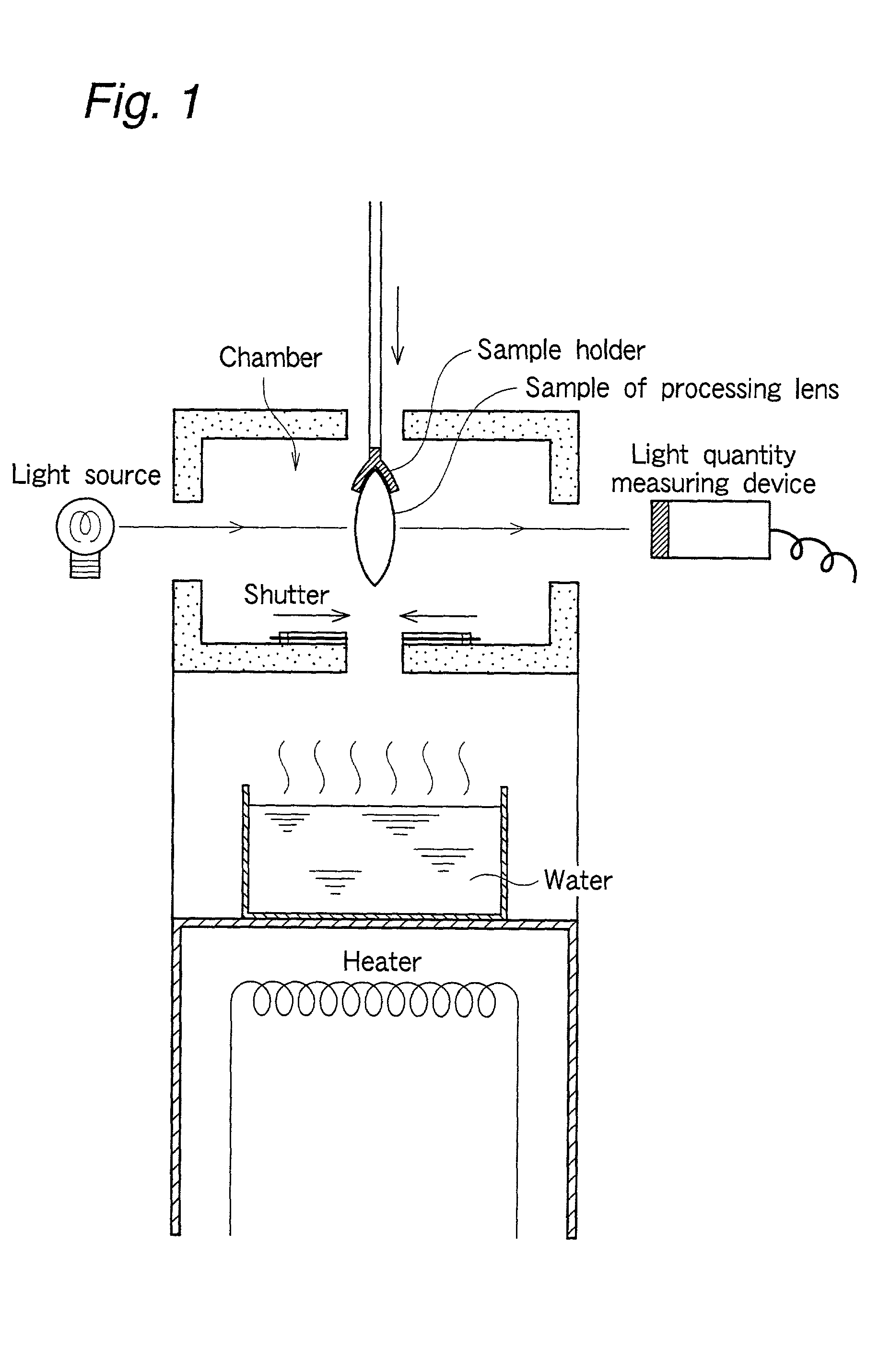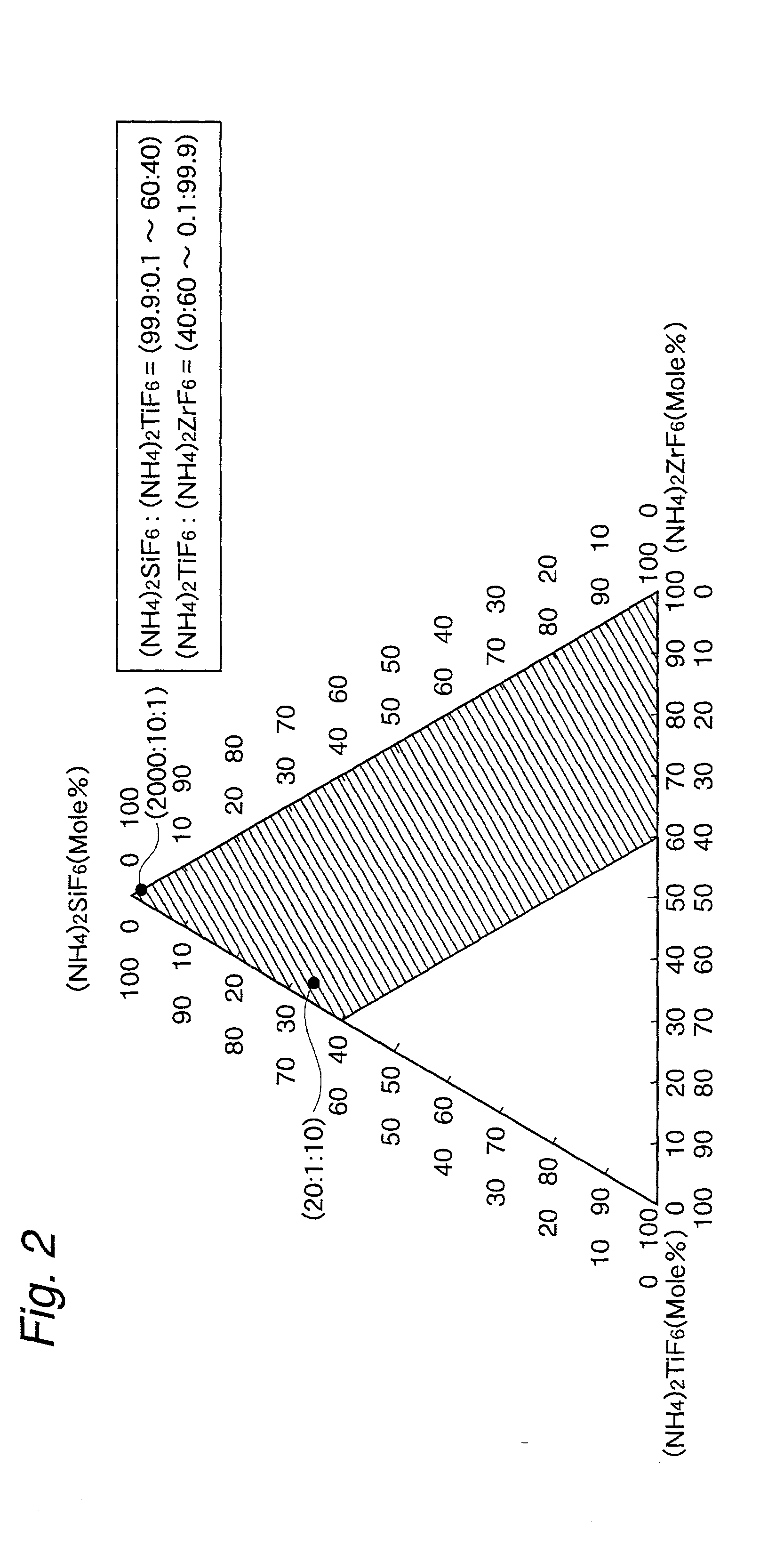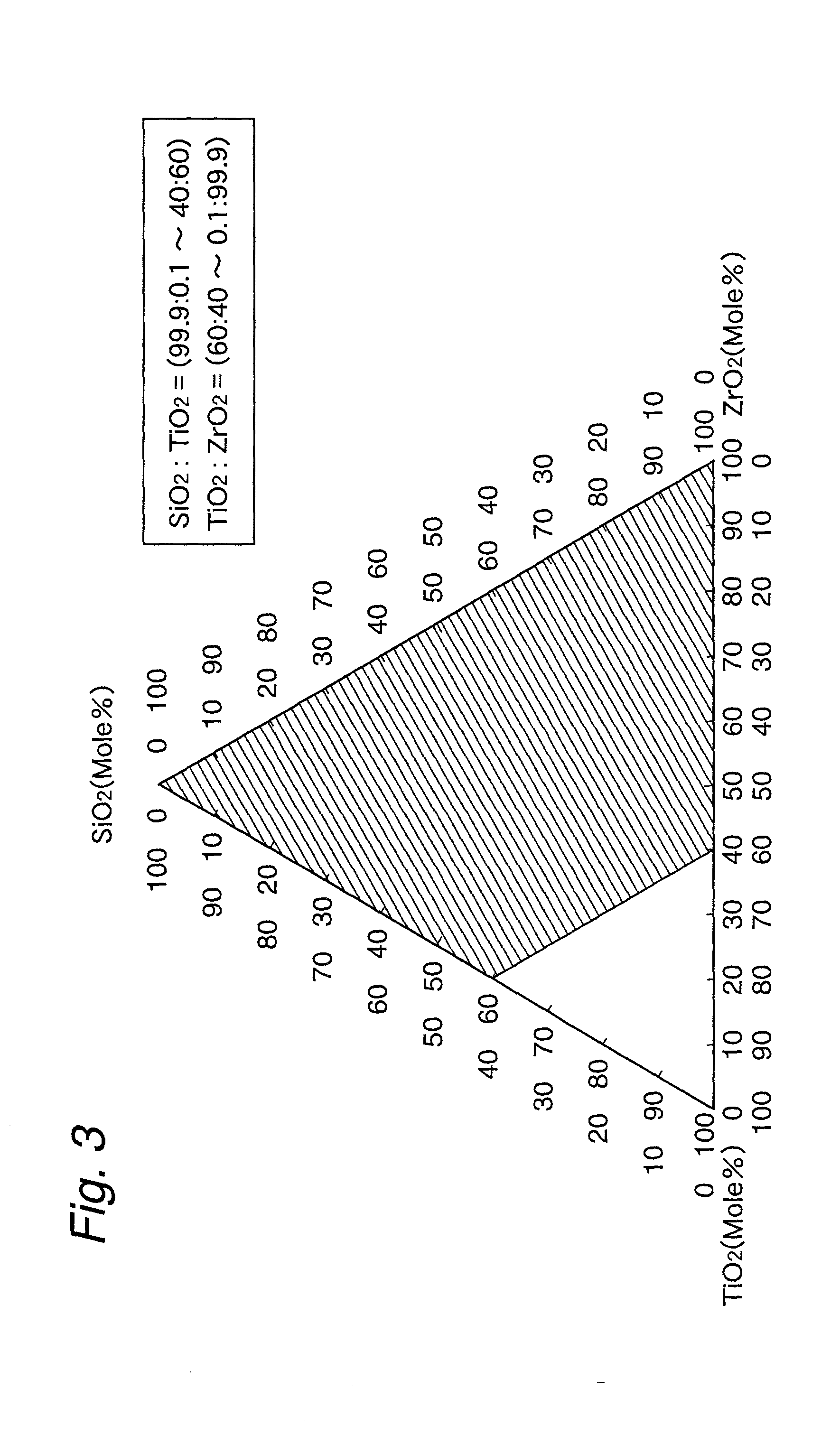Antifogging product, inorganic hydrophilic hard layer forming material and process for producing antifogging lens
a technology of inorganic hydrophilic hard layer forming material and lens, which is applied in the direction of instruments, record information storage, transportation and packaging, etc., can solve the problems of undesired photocatalyst effect, and achieve excellent abrasion resistance, excellent hydrophilicity, and high mechanical strength
- Summary
- Abstract
- Description
- Claims
- Application Information
AI Technical Summary
Benefits of technology
Problems solved by technology
Method used
Image
Examples
example 1
[0093] Mixed powder containing 10 g Of SiO.sub.2, 5 g of TiO.sub.2 and 1 g of ZrO.sub.2 was put in an aqueous solution in which 3 ml of 46% HF aqueous solution was dissolved in 600 ml of pure water, and then the reaction of the mixture was carried out with vigorously stirring at about 25.degree. C. for 24 hours. Thereafter, the aqueous solution in which unreacted powder had remained was left to stand and the supernatant liquid was batched off. NH.sub.4OH aqueous solution was dropwise added to the supernatant liquid with a pipette. As the NH.sub.4OH aqueous solution was thus added, the whole aqueous solution came to be a slightly clouded state. Thereafter, when the whole liquid became transparent, the addition of NH.sub.4OH aqueous solution was stopped, and the preparation of the processing liquid was completed. Ten grams of boron oxide (B.sub.2O.sub.3) was added to 600 ml of this processing liquid (40.degree. C.), and the whole liquid was strongly stirred to dissolve completely. In ...
example 2
[0096] Ten grams of ammonium hexafluorosilicate ((NH.sub.4).sub.2SiF.sub.6-), 1 g of ammonium hexafluorozirconate ((NH.sub.4).sub.2ZrF.sub.6) and 5 g of ammonium hexafluorotitanate ((NH.sub.4).sub.2TiF.sub.6) were weighed, and then they were mixed and dissolved in 600 ml of pure water at 40.degree. C. to prepare a liquid.
[0097] Ten grams of boron oxide was added to the thus prepared liquid and the whole processing liquid was strongly stirred to dissolve completely. A plastic lens provided with a hard coated layer, which lens had been prepared in advance, was dipped in the processing liquid. After dipping for 24 hours in the state of keeping the processing liquid at 40.degree.0 C., the lens was taken out from the processing liquid, and then the surface was washed and dried.
[0098] When the thus coated lens was set in a high humidity environment, the coated lens still maintained the transparency and was confirmed to be endurable for applying to a lens, while a usual uncoated lens was c...
example 3
[0100] After eye-glass lenses coated with an inorganic hydrophilic hard layer according to the present invention were left to stand in a darkroom for one week, two weeks, one month, and three months, respectively, the glass lenses were taken out from the darkroom and it was confirmed whether they reveal an antifogging effect with a high humidity chamber shown in FIG. 1.
[0101] With respect to the thin films formed on the surfaces of lenses used here, the composition was measured in the same manner as in Example 1 and the results are shown in Table 3.
3TABLE 3 XRD analysis results of the lens coats Atoms Si Zr Ti F contained (atomic %) (atomic %) (atomic %) (atomic %) Run 1 57.68 2.11 36.29 0.96 Run 2 59.91 12.08 27.61 0.4 Run 3 54.19 9.21 36.25 0.34 Run 4 67.18 8.81 22.38 0.53 Run 5 65.98 5.71 27.38 0.93 Run 6 56.3 10.55 32.84 0.3 Run 7 62.87 3.38 33.06 0.69 Run 8 58.87 12.21 28.37 0.55 Run 9 45.95 10.55 42.87 0.64 Run 10 56.48 3.81 42.87 0.66 Average 58.541 7.842 32.992 0.6
[0102] The...
PUM
| Property | Measurement | Unit |
|---|---|---|
| refractive index | aaaaa | aaaaa |
| contact angle | aaaaa | aaaaa |
| temperature | aaaaa | aaaaa |
Abstract
Description
Claims
Application Information
 Login to View More
Login to View More - R&D
- Intellectual Property
- Life Sciences
- Materials
- Tech Scout
- Unparalleled Data Quality
- Higher Quality Content
- 60% Fewer Hallucinations
Browse by: Latest US Patents, China's latest patents, Technical Efficacy Thesaurus, Application Domain, Technology Topic, Popular Technical Reports.
© 2025 PatSnap. All rights reserved.Legal|Privacy policy|Modern Slavery Act Transparency Statement|Sitemap|About US| Contact US: help@patsnap.com



